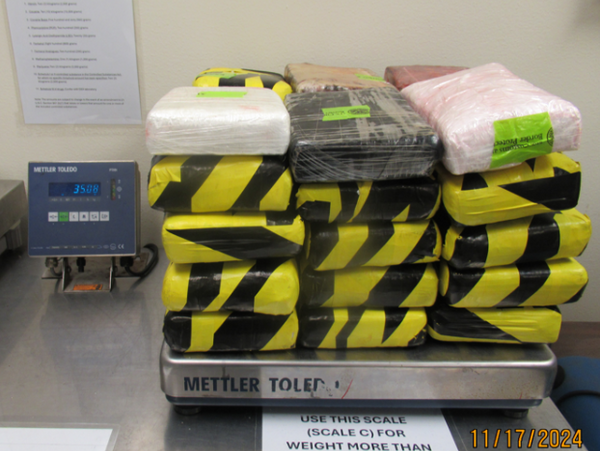
Alphabet soared 9% on Sept 3, 2025. In a statement that investors everywhere celebrated, U.S. District Judge Amit Mehta - the same judge who ruled Google was illegally operating a monopoly last year - decided yesterday that the Department of Justice’s proposed penalties for the company were too harsh.
The result? Google is no longer under threat of being broken up and forced to sell Chrome, which represents a significant part of what makes Google’s search and advertising businesses so successful.
To be clear, the other penalties are still on the table, though. Google’s been ordered to share indexing and data with competitors to “level the playing field,” and the company’s now barred from exclusive contracts.
But how should you play this? Obviously, the markets made their sentiment known - as you can see from the 5-day chart.

With that out of the way, I see two strategies that you can use to capitalize on this potential bull run, each banking on upside price movement but offering different ways to earn money.
So, let’s take a look at long calls and bull puts.
Long Call
Long calls are single-leg option strategies that function as a directional bet on an underlying asset. In this case, you want the stock price to increase.
Buying a long call option gives you control of 100 shares of the stock, at a fraction of the price. Of course, the level of exposure isn’t the same as owning 100 shares of the stock, but if you’re willing to pay top dollar and firmly believe that Google isn’t done climbing yet, then you can get option contracts that reflect 80% or more of the underlying’s price movement. That’s called delta, the options Greek that indicates the relationship between the premium and the stock price movement.
A delta of 80 means that the premiums are expected to increase 80 cents for every $1 increase in the underlying asset. The thing is, high-delta long calls are always in the money, which means their premiums will be higher. Let’s take a look at just how high, with GOOGL as the underlying asset.
Finding An 80 Delta Long Call Trade
The first thing you need to do is go to Barchart.com and search for Alphabet. Once on the stock’s profile page, go to the left-hand navigation panel and click Long Call/Put.

You’ll be brought straight to the results page, where you’ll see suggested trades for the nearest expiration date.
Now, when buying in-the-money or deep ITM call options, it's usually best to select a contract that expires further into the future. This trade has less exposure to time decay and allows for more time for the trade to work out in your favor. Let’s look for trades that will expire in three months by adjusting the expiration to December 19, 2025.

And there we have it, a 79-delta ITM trade. According to the screener, you can buy a 205-strike call on GOOGL for $33.45 per share or $3,345 total. The breakeven price is $238.45, just roughly $8 away from Google’s current trading price. The relatively close breakeven price is another advantage of ITM calls.
By the way, delta also works as a shorthand indicator of the probability of profit. For long calls, this particular trade has a 79.3% chance of profiting.
Best-case scenario, GOOGL trades above $238.45 with still ample time left in your contract. That way, you can sell the option for a tidy profit. Worst-case, Google falls below your $205 strike price, and you lose the premium paid.
Bull Put
Now, if you still want to participate in GOOGL’s potential upward momentum but don’t have $3,000 to fork out on an ITM long call, I recommend having a look at the bull put options strategy.
A bull put is an intermediate-level options trading strategy that involves buying a put and selling another at a higher strike price on the same underlying asset with the same expiration date.
The strategy aims to profit from the asset's anticipated moderately bullish price movement - emphasis on moderately, because there’s a point where you would have gotten a lot more money if you’d just bought an OTM long call instead.
Setting up a bull put spread results in a net credit. Essentially, you’re getting paid upfront, and if Google goes up beyond your short strike, you get to keep the premium.
Finding High-Potential Bull Put Trades
Bull put trade suggestions can be found in the Verital Spreads page.

For credit spreads, I like to give my trades time, but not too much. So, I’ll switch the expiration to October 3, 30 days from now.
And here, we can find the suggested trades. Another trading preference of mine is limiting my loss probabilities to 30% or less when selling credit spreads, while still earning enough premium to make the trade worthwhile. So, I’ll pick the second one on the list here:

According to this trade, you can sell a 225-strike short put on GOOGL and get $4.60 per share. At the same time, you can buy a 205-strike long put and pay $1.07, bringing your effective net credit to $3.53 or $353 total per contract (that’s just credit less debit for calculation, times 100 for the total amount). The trade has a 30.6% chance of ending at a loss.
The great thing about bull put spreads is that they have defined risks. With this setup, as long as Google trades above $225 at expiration, your trade is profitable. However, if the stock falls below your $205 long strike, your losses are also limited to the difference between the strikes ($225 - $205 = $20), less your net credit ($20 - $3.53 = $16.47).
Final Thoughts
Long calls and a bull put spreads are both bullish strategies, but the difference lies in the execution and the results. For long calls, you’re anticipating that call options will be more expensive before your contract’s expiration, so you can sell them at a profit. For bull puts, the goal is for the stock to trade above your short strike.
At the end of the day, your trading preference will help you decide which one fits better. Just be aware that, like with everything else in the market, there are risks involved. So, monitor your positions and always be ready to cut your losses, if required.
On the date of publication, Rick Orford did not have (either directly or indirectly) positions in any of the securities mentioned in this article. All information and data in this article is solely for informational purposes. For more information please view the Barchart Disclosure Policy here.






